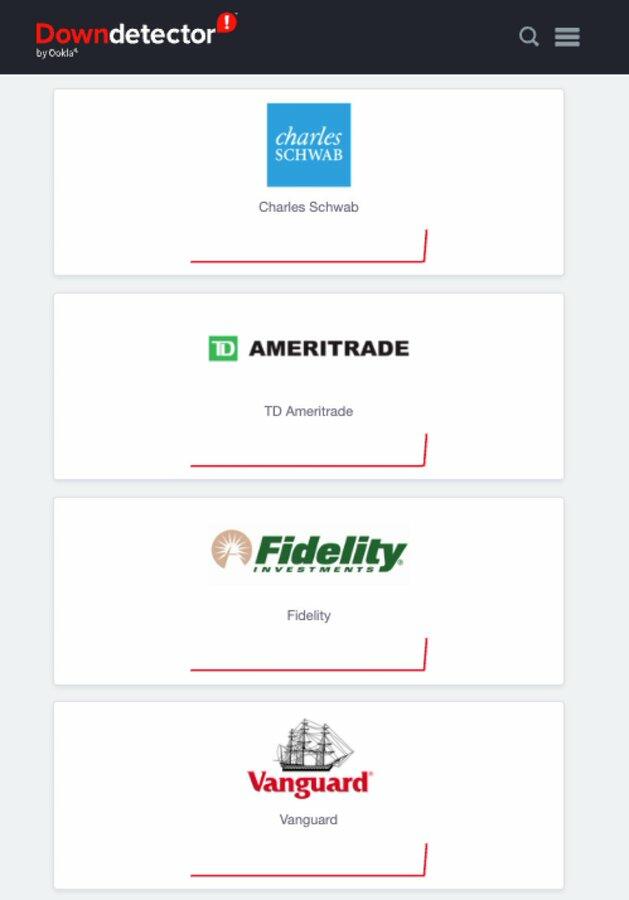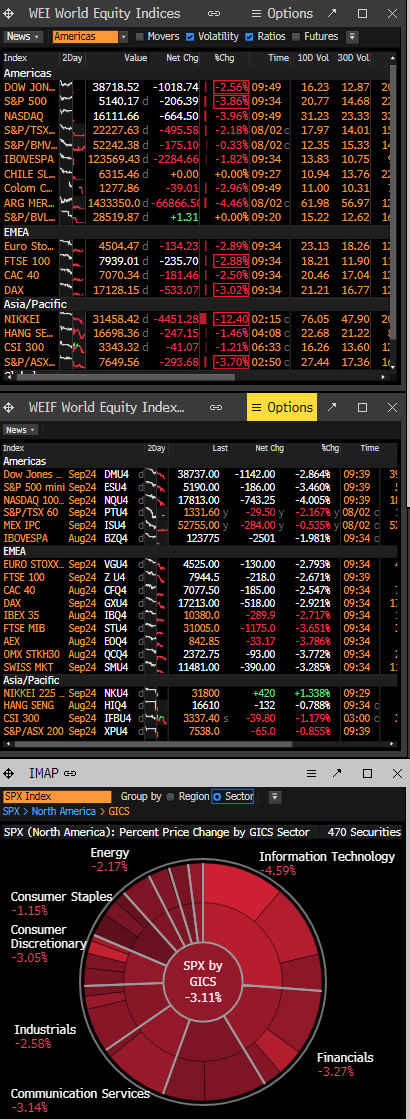Markets are worried that the Fed could get blindsided
Rather than a half-percentage-point rate cut in September, expect quarter-percentage-point cuts at each of the next four Federal Reserve meetings.
Friday's July jobs report capped a week of disappointing economic releases that collectively put the economy on recession watch. Jobless claims are up, payrolls growth and wage growth are weakening, and the outlook for the highly cyclical manufacturing industry is deteriorating.
Markets think the U.S. Federal Reserve is behind the curve, and that perception could be as damaging as its reality.
Hurting market sentiment even more, the U.S. unemployment rate rose enough in July to trigger the Sahm Rule. This is former Fed economist Claudia Sahm's observation that historically, when the unemployment rate's three-month moving average rises above its low over the previous 12 months, the economy has already slipped into recession.
There are several reasons why mid-2024 could prove an exception to the Sahm Rule. Hurricane Beryl shut down large swathes of the Houston economy in July, affecting more than 2% of Americans - a headwind that is quickly fading. The auto industry retools in the summer months, which may be behind some of the weak manufacturing sentiment and hiring. And many members of the recent wave of new immigrants arrived in the United States without jobs and looking for work, contributing to higher unemployment.
Even so, this economic growth scare should be a wake-up call for the Fed. Their economists forecast with statistical models, but their policymakers explain how they use those forecasts with narratives - with storytelling. Their dominant story in the last few years has been higher inflation for longer: the post COVID-19 pandemic economic boom, flood of stimulus, and labor shortage have shocked the U.S. economy into a regime of sticky high inflation, which only an extended bout of pain (or at least high interest rates) can return to normal.
There is some evidence that sticky inflation has legs. The big pay increases negotiated by unions in the past year are still contributing to overall wage growth, as is the fast-food wage hike in California. Service prices that reset infrequently, such as homeowners and auto insurance, are rising much faster than normal, and shelter inflation in both the CPI and PCE indexes is still too high.
But does that evidence make the story likely? Union wage deals move the needle on overall wages in Michigan. But across the U.S., unions represent only about 6% of private-sector workers. Slowing hiring and quits in the rest of the private job market already looks to have overpowered the effect of union wage deals on average wages.
For inflation more broadly, there is growing evidence that the regime is already shifting back to a cooler status quo. Consumers got some price relief in the first half of the year from less expensive new- and used cars, household appliances, furniture and electronics. Judging from the tone of many consumer-facing businesses on the second-quarter earnings calls, discounting is set to broaden in the remainder of the year to touch more prices in grocery stores, restaurant menus and services more generally.
Separately, the growth scare demands serious consideration even if the July data exaggerate how bad it is. After the latest revisions, the economy's trend wasn't great in June, well before Beryl. The three-month moving average of payrolls growth slowed to 177,000 in the June jobs report, and July's report revised the April-to-June average down further to 168,000. That is too slow to keep up with the workers entering the labor market this year and fulfill the Fed's mandate for maximum employment.
The Fed is likely to reassure markets that it's ready for a broad range of contingencies.
Where does that leave the Fed? When the economy looks like it's at a turning point, monetary policymakers want to make clear that they are ready to respond flexibly and nimbly if the turn goes further into weakness than expected, as well as being prepared if inflation resurges. The Fed's July monetary policy statement largely articulated this stance. But the Fed didn't articulate a plan to respond to a serious, self-reinforcing downturn - which absent some new inflationary shock could easily push inflation below their target - and markets are worried that the Fed could get blindsided.
This is apparent in financial markets' response to the growth scare. Markets priced in faster and somewhat deeper rate cuts over the last week, but still to a restrictive level. After Friday's close, the fed-funds futures curve still prices the fed funds rate at around 3.5% three years from now, despite a strong majority of FOMC members saying they think the neutral rate is between 2% and 3% in the June dot plot, and despite inflation-protected bonds pricing in inflation at under 2% for the next two years. The Fed has spent the past few years bolstering their inflation-fighting credibility with tough talk - so much so that markets are worried they wouldn't return rates to neutral even if growth and inflation seriously undershoot the Fed's benign base case.
I expect Fed policymakers to adjust their storytelling in the next few weeks to reassure markets they are ready for a broad range of contingencies, including serious downside risks. I'm watching for their communications to add language like: "If the balance of risks swings far enough to the downside, the Fed could cut interest rates to levels that not only wouldn't hinder growth, but would outright support it."
That would reassure the public that the Fed is alert to the possibility of a new regime change - and by doing so, lower the risk that the growth scare turns into a prolonged downturn.
That is why it seems unlikely to me that the Fed would make an outsize half-percentage-point rate cut in September or later this year. After the weaker than expected data for July, central bankers will probably adjust their tone and then make quarter-percentage-point cuts at each of their next four meetings. That would avoid the risk that a sudden swing in interest rates that scares the public into thinking the economy is worse than it really is, or pushes the Fed's monetary stance into too easy of a posture and fuels a resurgence of inflation.
Bill Adams is chief economist at Comerica Bank.
https://www.morningstar.com/news/marketwatch/2024080599/memo-to-the-fed-the-economys-growth-scare-is-your-wake-up-call

